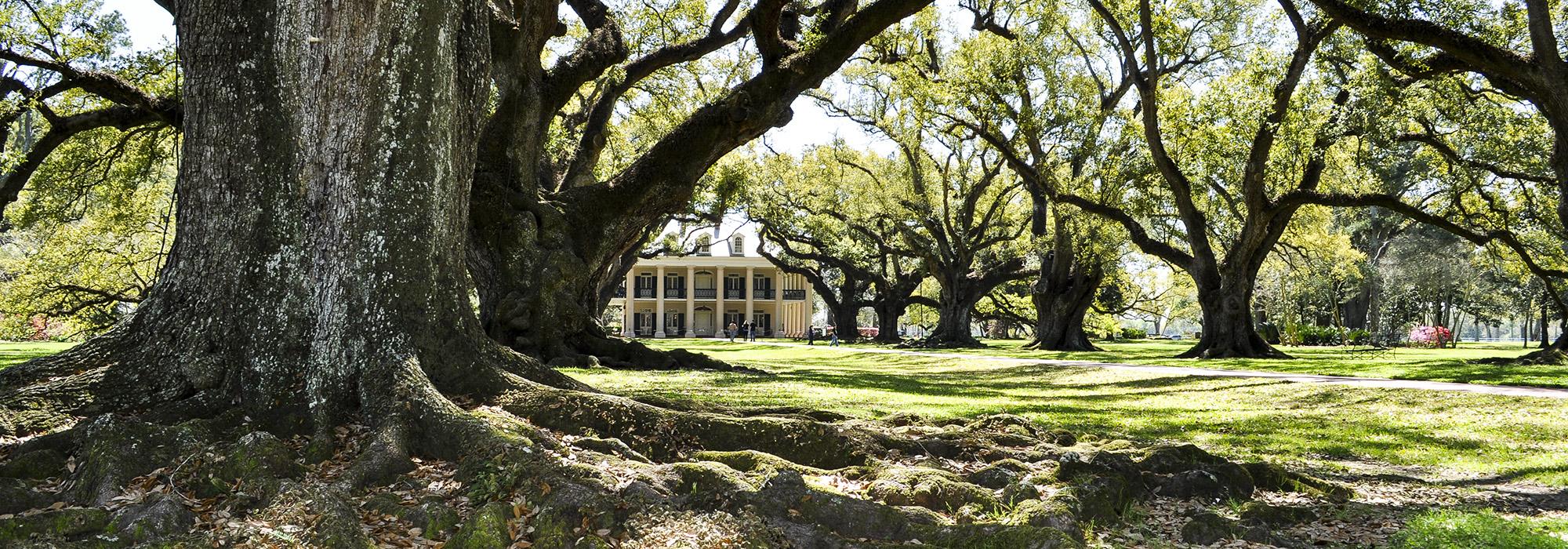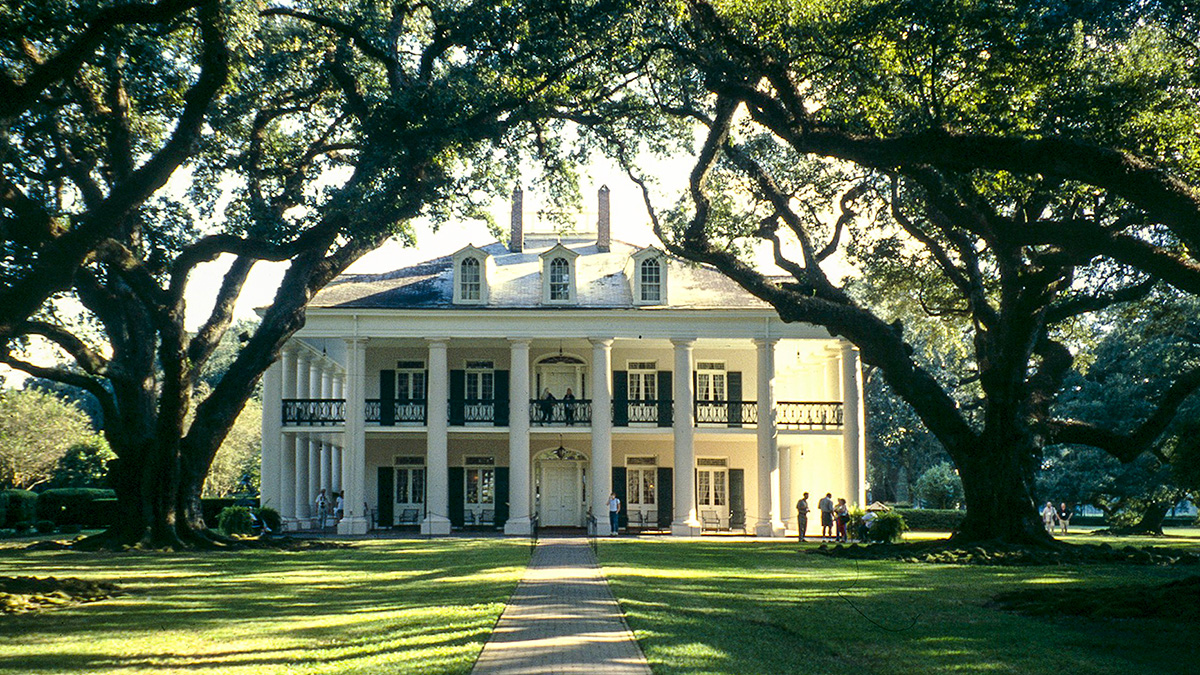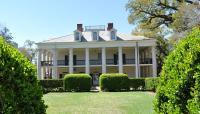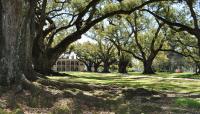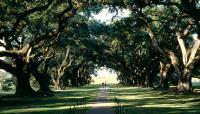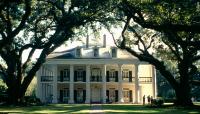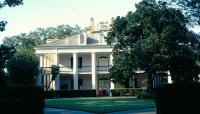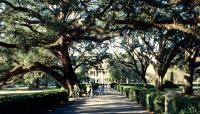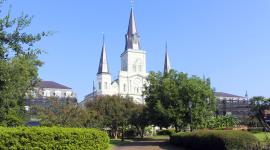Landscape Information
Originally called the Bon Sèjour Plantation, Oak Alley Plantation was built by Jacques T. Roman on an existing farm and homesite. Roman built a Greek Revival mansion, thought to be designed by Joseph Pilié, on axis with an allée of mature oaks planted in the early 1700s. Today these trees are a signature feature of the plantation, an iconic, ¼-mile long shaded passage that stretches from the house to the River Road.
The plantation was laid out in a typical Louisiana Colonial manner. The mansion, or “Big House,” was located closest to the river in a square layout, while the overseer’s house, houses of the enslaved workers and sugar mill were behind the house nearer the sugar cane fields. Camellias, crepe myrtles, azaleas, and magnolias were planted around the mansion, while a teardrop-shaped drive marks the terminus of an extended, boxwood-lined oak allée approaching from the south. A more formal boxwood and lawn garden, circa 1927, occupies the place of a former kitchen garden to the east.
The plantation changed hands numerous times after 1866, and by the 1920s fell into disrepair. In 1925 it was purchased by Andrew and Josephine Stewart, and the mansion was restored with the help of architect Richard Koch. In 1972 the mansion and 25 acres passed to the Oak Alley Foundation; under its direction, archeological excavations have wielded exhibits conveying the estate’s past. Demolished in the 1920s, dwellings of the enslaved workers were reconstructed in the 1990s, hosting permanent exhibits on life and labor under enslavement. Historic objects unearthed on the property, belonging to both the African American and white residents are maintained by the foundation’s Research and Collections department. The property was listed on the National Register of Historic Places as a National Historic Landmark in 1974.



